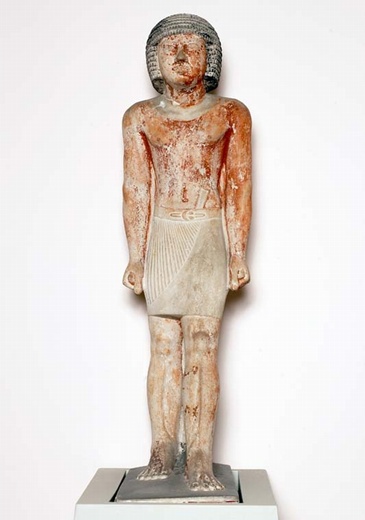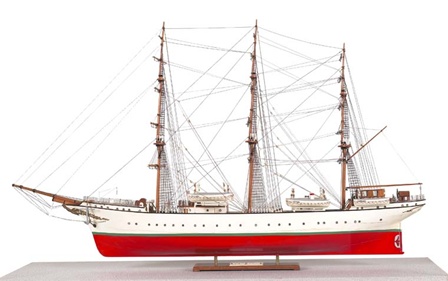John F. Kennedy, Oval Office
Artist/Designer: John F. Kennedy
Project Location: Washington, D.C., United States

















Style/Period(s):
Modern
Primary Material(s):
Textile
Function(s):
Workplace, Residential Structure
Related Website(s):
Significant Date(s):
20th Century, 1961, 1963
Additional Information:
Historically the White House, the center of Western power and one of the most recognizable houses in history, has been a contentious site for decoration since John Adams occupied the home in 1800. To date one of the most recognizable and controversial redecorations of the Oval Office occurred under the Kennedy Administration in 1961. While a few objects, such as the model boats, were chosen by John F. Kennedy the overall interior design of the Oval Office displayed First Lady Jackie Kennedy’s, one of the most fashionable first ladies, genius visions. To assist in her design decisions concerning this powerful space Jackie recruited renowned interior designers Sister Parish and Stéphane Boudin for their taste in decor and Winterthur’s Henry Du Pont for his expertise in American antiques.
While John held office Jackie transformed the White House into a cultural institution. Jackie worked tirelessly establishing a Fine Arts Committee which inspected the furniture, objects, and artworks that flowed in and out of the historic residence. Each piece that was carefully chosen for inclusion within the Oval Office was guided by Du Pont and Kennedy’s joint treatise “The White House as a Symbol.” The treatise maintained that each piece from the recently restored Resolute desk to Thomas Birch’s USS United States vs. HMS Macedonian painting would be placed through a strict vetting process.
According to historian Laura Smith, Jackie Kennedy sought “to restore the historic integrity of the White House as a living museum and to provide protection henceforth.” Jackie was committed to the notion that she must re-establish ‘history’ within this historic space. Jackie believed that the White House, or the "18th-century house," was a museum that should reflect the style of previous presidents who had occupied the space and the artistic heritage of America.
Every object that the Kennedys chose for inclusion within the Oval Office was reflective of JFK's presidency. Those specific items chosen for Kennedy's office such as the USS Constitution vs HMS Guerriere painting by Michele Felice Corne or the Striding Man gifted to Kennedy by the Egyptian president offers one brief glimpse into Kennedy's beliefs, personality, and his personal past. Each personal decoration within the Oval Office explicitly states what type of "taste-maker," Kennedy is. The paintings that the Kennedy's chose to include within the Oval Office are particularly symbolic for the ways in which they demonstrate Kennedy's knowledge of America's militaristic past and America's exploration of the Western Frontier. Within the White House's Oval Office it is imperative to pay particular attention to ways in which the administration uses interior design and decorative choices for political messaging.
Objects that were included in the Kennedy Oval Office are as follows (cited from: Items in President Kennedy's Oval Office):
Lamps
Desk lamp: Hercolite Executive made by Herco Art Manufacturing of Wallingford, Connecticut.
Paintings
"The White House Long Ago" - Watercolor of the White House by Jacqueline B. Kennedy (on table and desk);
"USS Constitution vs HMS Guerriere"-Michele Felice Corne (Left over mantel);
"Bonhomme Richard" (Center over mantel);
"United States versus the Macedonia" - (Right over mantel);
"Buffalo Bull" - by George Catlin - (next to door);
"Buffalo Hunt under Wolf Skin Masks" - by George Catlin -(next to door).
"USS United States vs. HMS Macedonian" - by Thomas Birch
Model Boats
"The Danmark"
"The Sea Witch"
Furniture
"Chair" that belonged to President Kennedy when he attended Harvard.
"Chair"-given to President Kennedy in February 1961 by the Harvard Class of 1964. Affixed to the back of the chair is an engraved brass plate.
"Executive chair"
"Carolina Rocking Chair"
"Resolute Desk"
Miscellaneous Ephemera, Objects, and Furniture:
"Illuminated Globe"
"Striding Man" (Old Kingdom, 5th Dynasty)- Ancient Egyptian Statue given to Kennedy by Egyptian President Gamal Abdel Nasser
"Carved Coconut"-Kennedy's Boat was attacked by a Japaneese Destroyer Boat which left him stranded. When two native scouts in a canoe happened upon them, Kennedy carved, “Nauro Isl… Commander… Native Knows Pos’it… He Can Pilot… 11 Alive… Need Small Boat… Kennedy” onto a coconut, and asked the scouts to pass the message to an Australian coast watcher, who came to their rescue.
"Silver Goblet"-Gift From Ireland
'Ash Tray"-Gift from CIA Director
Viewers should treat all images as copyrighted and refer to each image's links for copyright information.